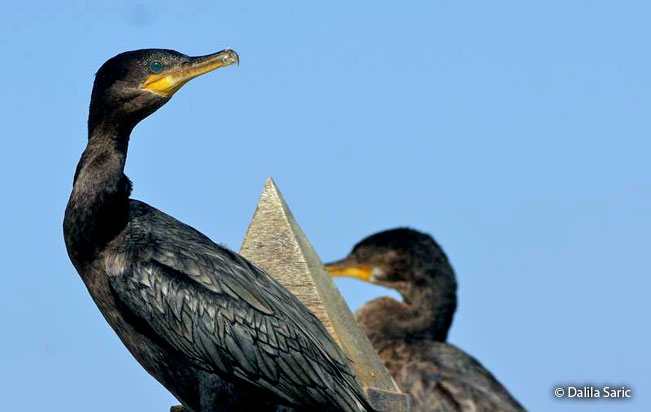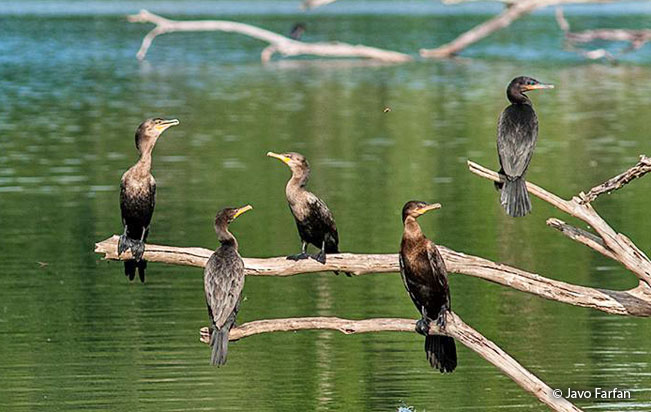Order: Pelecaniformes | Family: Phalacrocoracidae | IUCN Status: Least Concern

Age: Adult | Sex: Unknown | Loc. Paracas, Ica

Age: Adult – Alternate | Sex: Unknown | Loc. Villa, Lima

Age: Adult | Sex: Unknown | Loc. Paracas, Ica

Age: Adults | Sex: Unknown | Loc. Southeast Peru
Status: The Neotropic Cormorant is widespread and generally common where it occurs. It is the only cormorant in Amazonia and the high Andes. It also occurs in Co, Ec, Br, Bo, and Ch.
Name in Spanish: Cormorán Neotropical o Cushuri.
Sub-species: Neotropic Cormorant (Phalacrocorax brasilianus brasilianus) (Gmelin, JF, 1789).
Meaning of Name: Phalacrocorax: Gr. Phalakrokorax= loon, cormorant. brasilianus: L. originating from Brazil. In reference to the fact that this species was first described from specimens from Brazil.
 Voice:
Voice:Usually silent away from nest site. Guttural, hissing and grunting conversational notes at nest site.
References:
-
- Species range based on: Schulenberg, T. S., D. F. Stotz, and L. Rico. 2006. Distribution maps of the birds of Peru, version 1.0. Environment, Culture & Conservation (ECCo), The Field Museum. http://fm2.fieldmuseum.org/uw_test/birdsofperu on 10/18/2014.